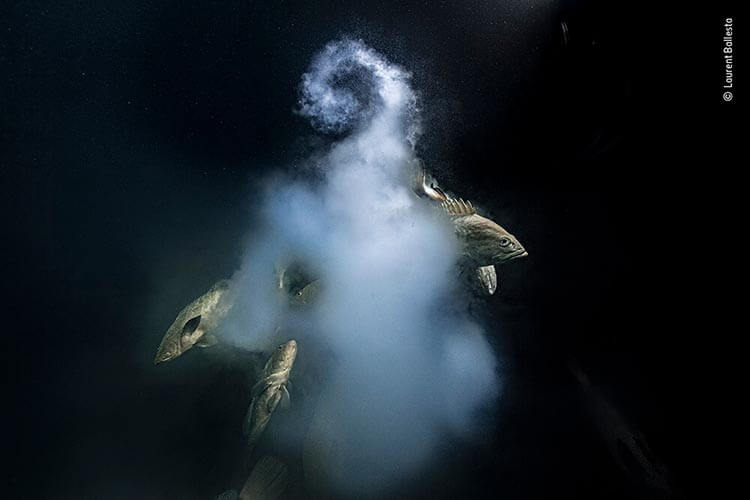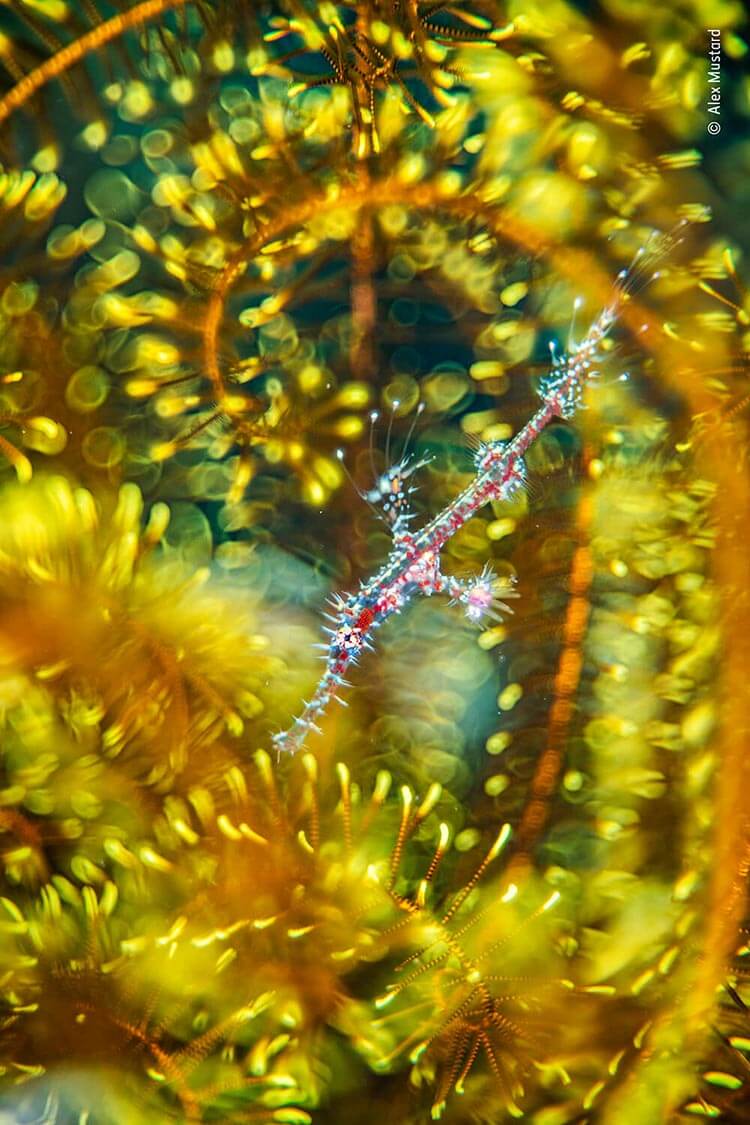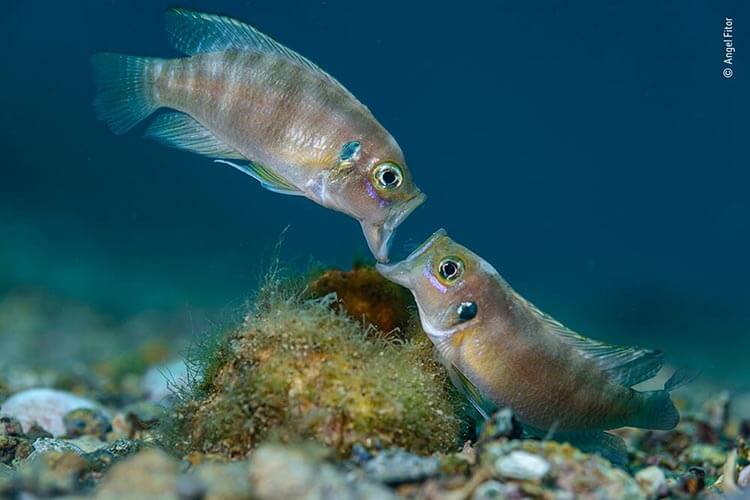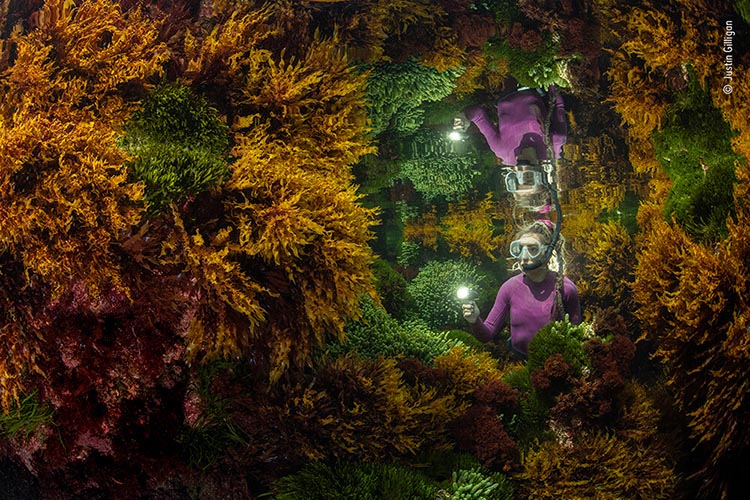
Underwater photographer Laurent Ballesta crowned winner of the Natural History Museum’s Wildlife Photographer of the Year 2021 competition
Winner, Natural Artistry
‘Bedazzled’ by Alex Mustard, UK

Alex Mustard finds a ghost pipefish hiding among the arms of a feather star. Alex had always wanted to capture this image of a juvenile ghost pipefish but usually only found darker adults on matching feather stars. His image conveys the confusion a predator would likely face when encountering this kaleidoscope of colour and pattern.
The juvenile’s loud colours signify that it landed on the coral reef in the past 24 hours. In a day or two, its colour pattern will change, enabling it to blend in with the feather star.
Equipment used: Nikon D850 + Trioplan 100mm f2.8 lens 12mm extension tube ND8 filter FIT +5 close-up lens, 1/250 sec at f2.8, ISO 80, Subal housing two Retra strobes
Winner, Underwater and Wildlife Photographer of the Year 2023
‘Creation’ – Laurent Ballesta, France

Laurent Ballesta peers into the depths as a trio of camouflage groupers exit their milky cloud of eggs and sperm. For five years Laurent and his team returned to this lagoon, in Fakarava, French Polynesia diving day and night to see the annual spawning of camouflage groupers. They were joined after dark by reef sharks hunting the fish.
Spawning happens around the full moon in July, when up to 20,000 fish gather in a narrow southern channel linking the lagoon with the ocean. Overfishing threatens this species, but here the fish are protected within a biosphere reserve.
Equipment used: Nikon D5 + 17–35mm f2.8 lens at 17mm 1/200 sec at f11 ISO 1600 Seacam housing Seacam strobes
Winner, Photojournalism
‘Elephant in the Room’ by Adam Oswell, Australia

Adam Oswell draws attention to zoo visitors watching a young elephant perform underwater.
Although this performance was promoted as educational and as exercise for the elephants, Adam was disturbed by this scene. Organisations concerned with the welfare of captive elephants view performances such as these as exploitative because they encourage unnatural behaviour.
Elephant tourism has increased across Asia. In Thailand, there are now more elephants in captivity than in the wild. The Covid-19 pandemic caused international tourism to collapse, leading to elephant sanctuaries becoming overwhelmed with animals that can no longer be looked after by their owners.
Equipment used: Nikon D810 + 24–70mm lens 1/640 sec at f2.8 ISO 1250
Winner, Portfolio Award
‘Face-off, from Cichlids of Planet Tanganyika’ by Angel Fitor, Spain

Angel Fitor provides an intimate look into the lives of cichlid fishes in Lake Tanganyika.
Two male cichlid fish fight jaw to jaw over a snail shell. Inside the half-buried shell is a female ready to lay eggs. For three weeks Angel monitored the lake bed looking for such disputes. The biting and pushing lasts until the weaker fish gives way. This struggle was over in seconds but lasted just long enough for Angel to get his winning shot.
Equipment used: Nikon D800 + Sigma APO Macro 150mm f2.8 lens; 1/200 at f9; ISO 200; Anthis Nexus housing; Retra strobes
Winner, Plants and Fungi
‘Rich Reflections’ by Justin Gilligan, Australia

Justin Gilligan creates the reflection of a marine ranger among the seaweed.
At the world’s southernmost tropical reef, Justin wanted to show how careful human management helps preserve this vibrant seaweed jungle. With only a 40-minute window where tide conditions were right, it took three days of trial and error before Justin got his image.
Impacts of climate change, such as increasing water temperature, are affecting the reefs at an ever-increasing rate. Seaweed forests support hundreds of species, capture carbon, produce oxygen and help protect shorelines.
Equipment used: Nikon D850 + Sigma 15mm f2.8 lens 1/160 sec at f13 ISO 400 Nauticam housing twin Ikelite DS161 strobes + sync cord


